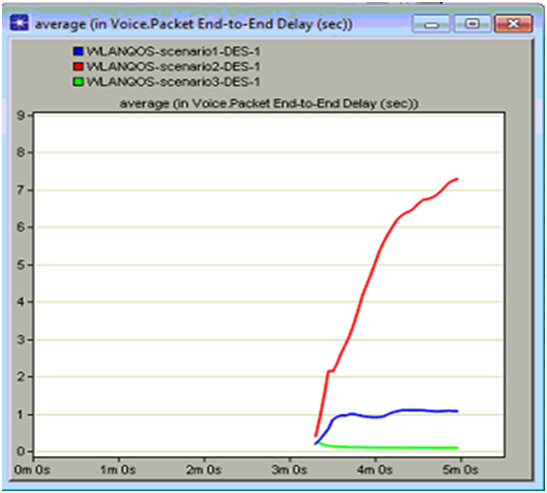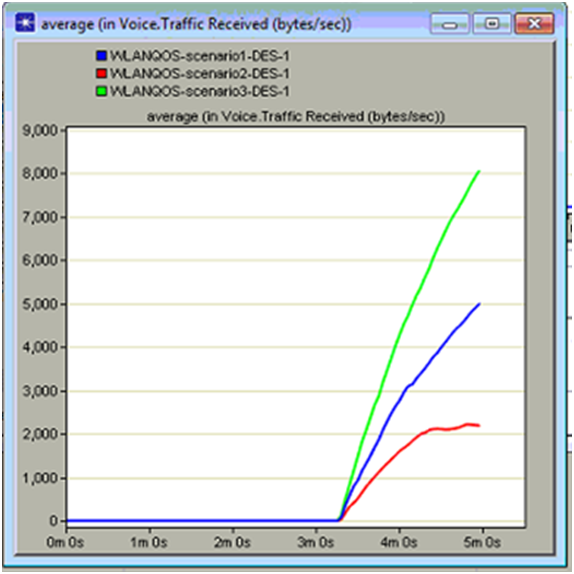Packet end to end delay
End to end delay plays an important role in estimating the quality of service requirements and in this context the overall performance of the network also depends on the packet end to end delay. The actual packet end to end delay caused across the three scenarios is given in the comparison graph and from the actual ideal application that is suited for the quality of service requirements in terms of low packet end to end delay is estimated and the resultant comparison graph is as shown below
This graph indicates that even the packet end to end delay is more with the IP telephony and this value is more than the other two application types. It can be understood that the packet end to end delay is very less with the GSM quality speech and it is almost zero where the packet end to end delay is more with the low quality speech when compared with GSM and very less when compared with IP telephony.
In general when there is low packet end to end delay then the optimal performance of the network against the quality of service requirements for a voice application can be ensured and the same is proved in this comparison. When all these three scenarios are compared now the quality of service requirements with the GSM speech is at the optimal level and thus always the GSM attributes are perfect at the quality of service requirements.
Traffic received bytes per second
Traffic received across the network indicates the overall traffic received at the destination side for the voice server and in this process all the three scenarios are considered and compared at the traffic level and the comparison graph is as shown below. In general the traffic received should be very less to ensure the optimal quality of service requirements and thus the overall traffic received at the voice destination by the three scenarios is as given below
The average traffic received at the voice destination is shown in the above graph. It is clear that the overall traffic received at the voice destination is more with the GSM quality speech when compared to the other two scenarios. A low traffic is received with the IP telephony and this indicates that ample number of CBR traffic packets are not received at the destination side and thus the quality of service is depressed a lot with the IP telephony application and when the case with the low quality speech is considered an optimal traffic received and even this value is less than the GSM quality speech.
From this overall analysis it can be concluded that the quality of service requirements can be enhanced with the traffic received and thus in this case it is understood that GSM quality voice applications are best suited to deliver more traffic and also ensure the maximum quality across the network.


